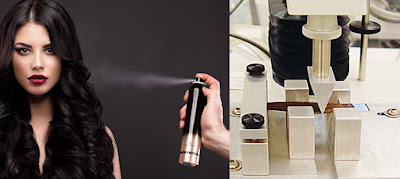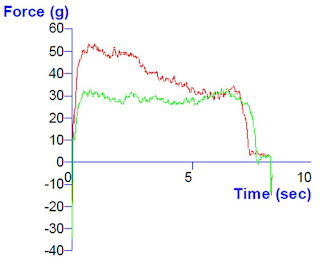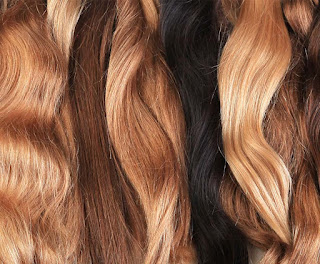Hair Mono Filament Testing
Tensile testing is the simplest method for measuring the strength of a hair fibre. Hair strength correlates with the amount of damage that it has undergone, whether from UV, bleach or mechanical treatments.
If the diameter of the hair is accurately measured using a micrometer, fundamental measurements of breaking stress, breaking strain, energy to failure and elastic modulus can be calculated. Hair fibres can be variable, so a large number of repeats will aid with data interpretation.
This type of test is generally performed at a constant strain rate (constant loading arm velocity), but fatigue testing can also provide useful information, as it is more imitative of the trials and tribulations undergone by a head of hair over its lifetime. In a fatigue test, a large number of small displacement cycles are performed. The sample is stretched a small distance, then a fluctuating movement applied for a given number of cycles, or until breakage.

Typical hair monofilament tensile test curve
Hair Bend Testing

The bending force of a hair bundle can be used as an indicator of softness. The effect of various hair treatments on softness can be determined by measuring the tress’s bending properties before and after treatment. For a treatment such as bleaching, an average bending force from a cycle of ten three-point bend tests is calculated for each sample.
 |
| A bending test performed by Croda using their TA.XTplus Texture Analyser |
This is also applicable to measuring the efficacy of conditioner formulations containing new softening ingredients. However, to prove the holding power of fixatives such as hair spray, the drop in bending force is calculated from the first to last cycle, as the polymer holding cast is broken after the first deformation. The hair bundle is clamped at one end and the remaining length placed on two supports. The Texture Analyser probe descends vertically on the sample a set number of times, applying pressure to the central section of the hair bundle.
Hair Suppleness
The cosmetics industry frequently promises softer, suppler hair after the use of their products, or promises that certain traditionally harmful methods (such as bleaching) will have no adverse effect. The difficulty comes in testing these properties in an imitative, repeatable way. The use of a Hair Suppleness Rig can measure the resistance of a hair sample to being run through a set of smooth bars, representative of running fingers through the hair on a human head.
The force detected by the loadcell when a hair sample is pulled through this rig is made up of several factors:
- The stiffness of the hair fibres (as they have to constantly bend on their way up through the rods)
- The friction between hair strands (as they rub against each other constantly when the tress is being pulled upward)
- The friction between the hair strands and the rig (as they are pulled against the surface of the rig itself)
 |
| The Hair Suppleness Rig |
 |
| Force profile of a suppleness test of bleached and virgin hair – the two tresses were initially identical. |
This is similar to subjecting a sample to a three-point bend test, but the bending configuration is slid along the length of the tress – i.e., continuous three-point bending. Bending tests can be challenging to set up in a reproducible way, particularly for suppler samples that cannot support their own weight without drooping, so this test is a simpler alternative that can be directly related to the consumer’s perception of their own hair texture.
Read the next instalment How to measure the physical and dimensional properties of hair – Laser Profiling on the blog next week.
There is a Texture Analysis test for virtually any physical property. Contact Stable Micro Systems today to learn more about our full range of solutions.
For more information on how to measure texture, please visit the Texture Analysis Properties section on our website.
The TA.XTplusC texture analyser is part of a family of texture analysis instruments and equipment from Stable Micro Systems. An extensive portfolio of specialist attachments is available to measure and analyse the textural properties of a huge range of food products. Our technical experts can also custom design instrument fixtures according to individual specifications.
No-one understands texture analysis like we do!
Get in touch to discuss your specific test requirements





No comments:
Post a Comment